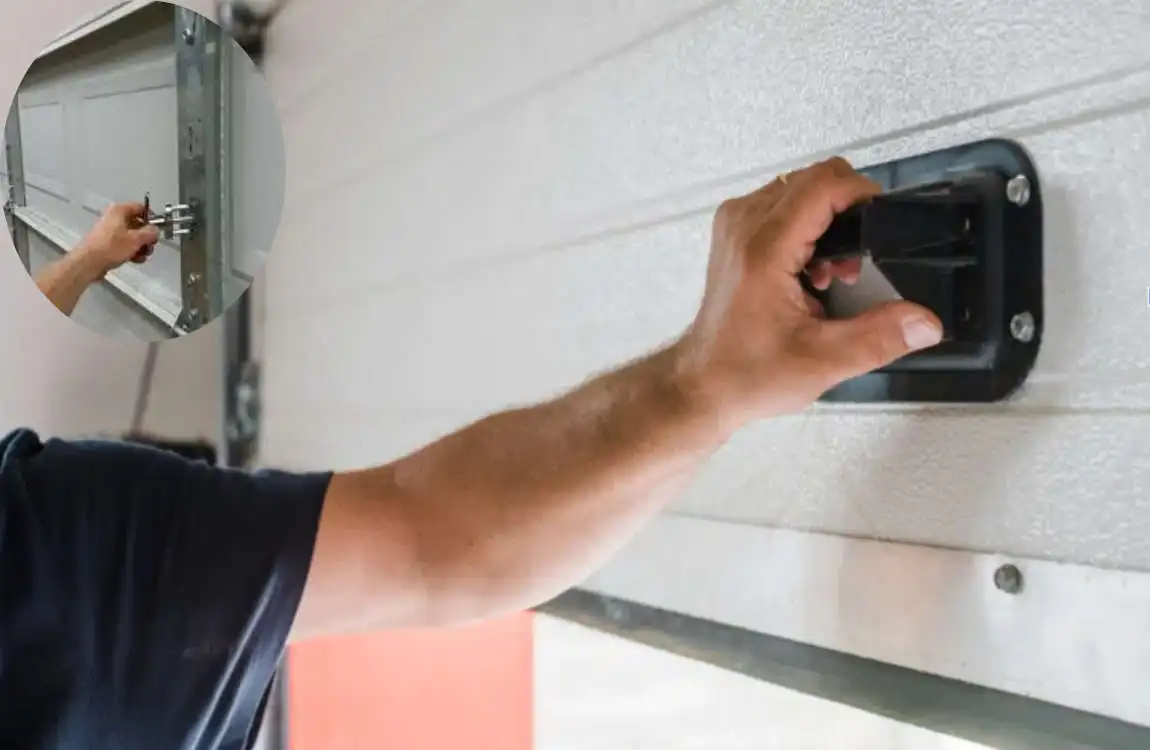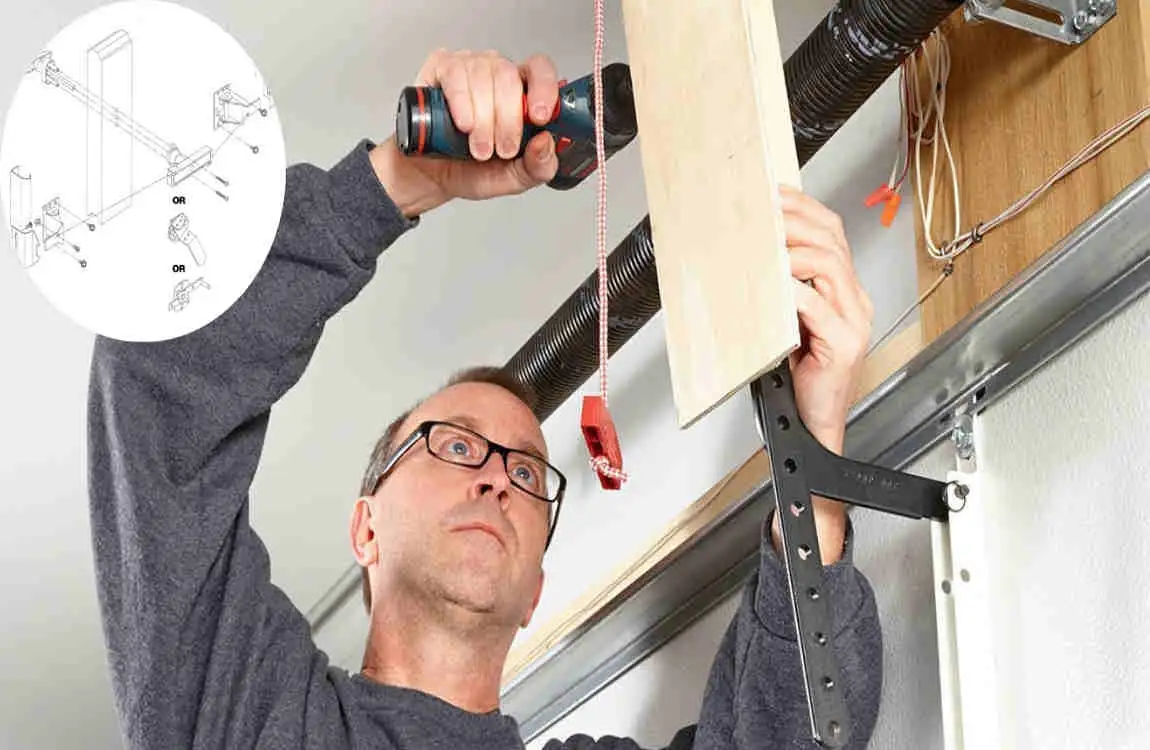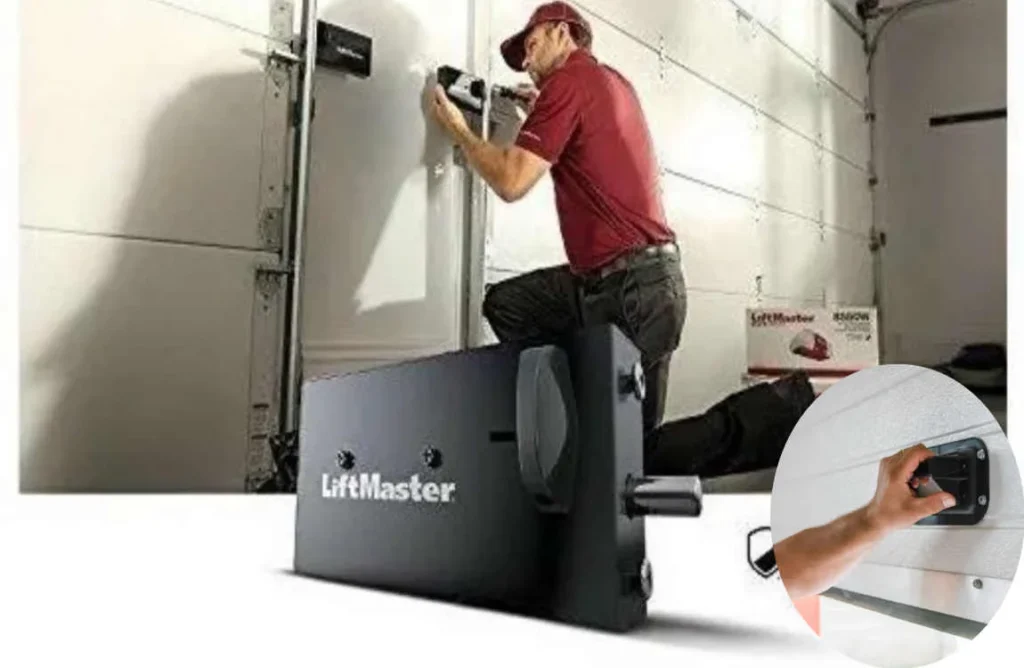Your garage door is more than just a convenient entry point—it’s a crucial part of your home’s security system. Whether you park your car inside or use the garage for storage, keeping it secure protects your belongings and your peace of mind.
Understanding Garage Door Locks

Before beginning the replacement process, it’s helpful to understand the types of locks you may encounter and how they operate.
Types of Garage Door Locks
Garage door locks come in various forms, each suited to different needs and door types:
- Manual locks: These are traditional locks operated with a key or thumb turn, often installed on the inside of the garage door.
- Electronic keypad locks: Allow keyless entry by entering a code. Great for convenience and shared access.
- Smart locks: Connected to your smartphone or house design automation system, offering remote control and monitoring.
- Deadbolts for garage entry doors: If your garage has a separate door from the house, a deadbolt adds an extra layer of security.
Components of a Typical Garage Door Lock
Most garage door locks share standard parts:
- Lock cylinder: The part where you insert the key.
- Latch or bolt: Moves in and out to lock/unlock the door.
- Handle or thumb turn: Used to operate the lock from inside.
- Strike plate: Mounted on the door frame to receive the bolt.
Understanding these parts helps when inspecting or replacing your lock.
Exterior vs. Interior Garage Door Locks
- Exterior locks usually require weather-resistant materials and are designed to prevent forced entry.
- Interior locks are often simpler since they don’t face outdoor elements, but must still be secure.
Why Choosing the Right Lock Matters
Selecting the right lock affects both the security and ease of use of your garage. For example, a smart lock adds convenience but may need more maintenance. Manual locks are simple but might not offer the best protection.
Tools and Materials Needed to Change a Garage Door Lock

Before you start, gather the right tools and materials. Having everything at hand will make the process smoother.
Essential Tools
- Screwdrivers: Both flathead and Phillips head.
- Pliers: For gripping and pulling.
- Cordless drill: Helps with screws, especially if they’re tight.
- Lubricant: Such as WD-40, to keep moving parts smooth.
- Replacement lock: Choose the correct type for your door.
- Tape measure: For checking dimensions as needed.
- Safety glasses and gloves: Protect yourself during work.
How to Choose the Right Replacement Lock
Consider these factors when picking a new lock:
- Compatibility: Match the lock type to your door style (sectional, roll-up, swing-out).
- Security level: Higher quality locks offer better protection.
- Ease of installation: Some locks are designed for DIY installation.
- Additional features: Keyless entry, innovative functionality, or weather resistance.
Safety Tips Before Starting
- Disconnect power if working with electronic locks.
- Work in a well-lit, clean area.
- Keep children and pets away from the workspace.
- Wear safety gear to prevent injury.
Step-by-Step Guide: How to Change Garage Door Lock
Ready to get hands-on? Follow these steps carefully to replace your garage door lock with confidence.
Prepare the Workspace and Gather Tools
Clear the area around your garage door. Lay out your tools and new lock parts in a location where you can reach them easily. Ensure the garage door is closed and securely in place to prevent accidents.
Remove the Old Lock Safely
- Locate the screws that hold the existing lock in place.
- Use the screwdriver or drill to remove them carefully.
- Gently pull the lock out from the door.
- For electronic locks, disconnect wiring according to the manufacturer’s instructions.
Inspect the Door and Lock Components for Damage
Before installing the new lock, check the door’s surface and surrounding frame:
- Look for cracks, splinters, or worn-out holes.
- Ensure the strike plate is firmly attached.
- Replace or repair any damaged parts to avoid future issues.
Install the New Lock
Installation varies by lock type, so here are tips for common ones:
Manual Locks
- Insert the new lock cylinder into the hole.
- Align the latch with the strike plate.
- Secure the lock with screws.
- Test the handle or thumb turn to ensure smooth operation.
Electronic Keypad Locks
- Mount the keypad on the exterior side of the device.
- Attach the locking mechanism inside.
- Connect wiring, if applicable.
- Program the keypad according to instructions.
Smart Locks
- Follow the manufacturer’s detailed installation guide.
- Connect to Wi-Fi or Bluetooth.
- Test smartphone app control.
Test the New Lock for Proper Functioning
Try locking and unlocking multiple times. Ensure the latch engages fully and the door opens and closes smoothly without resistance.
Lubricate Moving Parts to Ensure Smooth Operation
Apply a small amount of lubricant to the latch, bolt, and hinges. This helps prevent rust and keeps everything working quietly.
Reassemble and Clean Up the Area
Put back any removed trim or panels. Wipe down the door features surface and collect your tools. Dispose of the old lock properly.
Common Challenges When Changing Garage Door Locks and How to Overcome Them
Changing a lock isn’t always straightforward. Here are frequent problems and how to fix them:
Difficulty Removing Stuck or Old Locks
- Use penetrating oil and let it sit for 10-15 minutes.
- Gently tap the lock with a rubber mallet to loosen.
- Avoid forcing parts to prevent damage.
Aligning New Lock Hardware Correctly
- Measure twice before drilling new holes.
- Use a level to ensure the lock lines up with the strike plate.
- Adjust screws gradually for a perfect fit.
Lock Mechanisms Not Fitting Properly or Jamming
- Double-check the lock model fits your door type.
- Inspect for debris or misalignment inside the lock cavity.
- Lubricate and test before final installation.
When to Call a Professional for Garage Door Lock Replacement
Although many homeowners can handle lock replacement, some situations require expert assistance.
Situations Requiring a Locksmith or Technician
- Complex electronic or smart lock installations.
- Damaged garage door frame or structural issues.
- Locks that won’t come off despite gentle effort.
- When the lock mechanism is integrated with the door opener.
Signs You Need Expert Repair
- Repeated lock malfunctions after replacement.
- The door won’t close or latch properly.
- Visible damage to the door or lock housing.
- Security concerns extend beyond just the lock, including broken panels.
Average Costs of Professional Services
Service Type Estimated Cost (USD)
Basic lock replacement $75 – $150
Electronic keypad or smart lock $150 – $300
Repairing door/frame damage $200 – $500+
Tips to Maintain Your Garage Door Lock for Longevity and Security
A new lock is an investment. Keep it working well with these simple tips:
Routine Inspection and Cleaning
- Check the lock monthly for signs of wear or rust.
- Wipe down with a damp cloth to remove dirt.
- Test the lock regularly to catch issues early.
Weatherproofing and Rust Protection
- Use weather-resistant locks if exposed.
- Apply lubricant yearly to prevent rust buildup.
- Consider installing a door design seal to keep moisture out.
Re-keying vs. Replacing Locks
- Re-keying: Changing the internal pins so old keys won’t work. Cost-effective if the lock is in good shape.
- Replacing: Best for damaged or outdated locks.
Upgrading to Smart or Keyless Locks
- Adds convenience and remote monitoring.
- Consider this if you want to control access for family or service providers.
- Ensure your Wi-Fi is secure to prevent unauthorized access and hacking.
Frequently Asked Questions (FAQ) About Changing Garage Door Locks
How Long Does It Take to Change a Garage Door Lock?
Typically, it takes about 30 minutes to an hour for manual locks. Electronic or smart locks may take longer due to wiring and setup.
